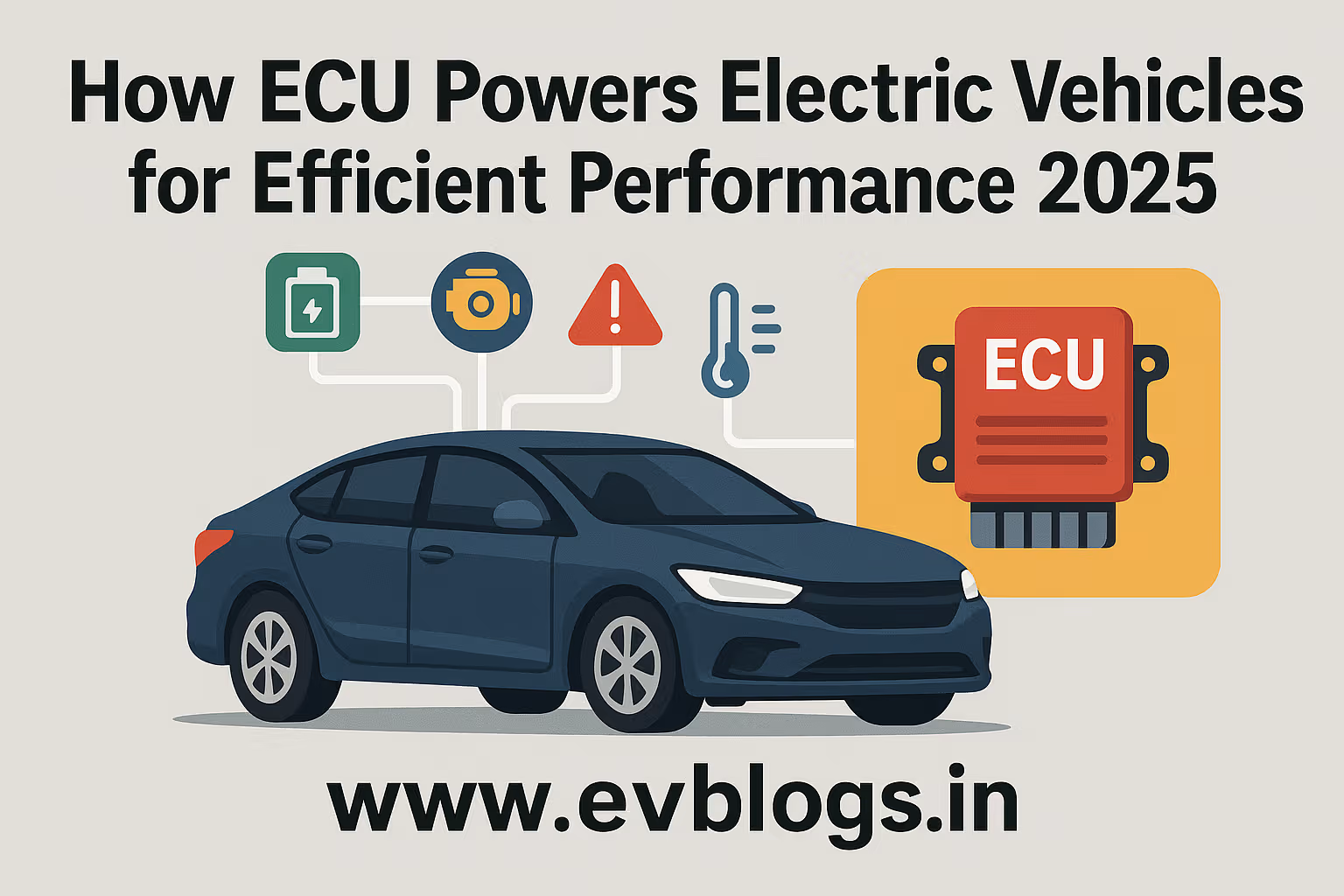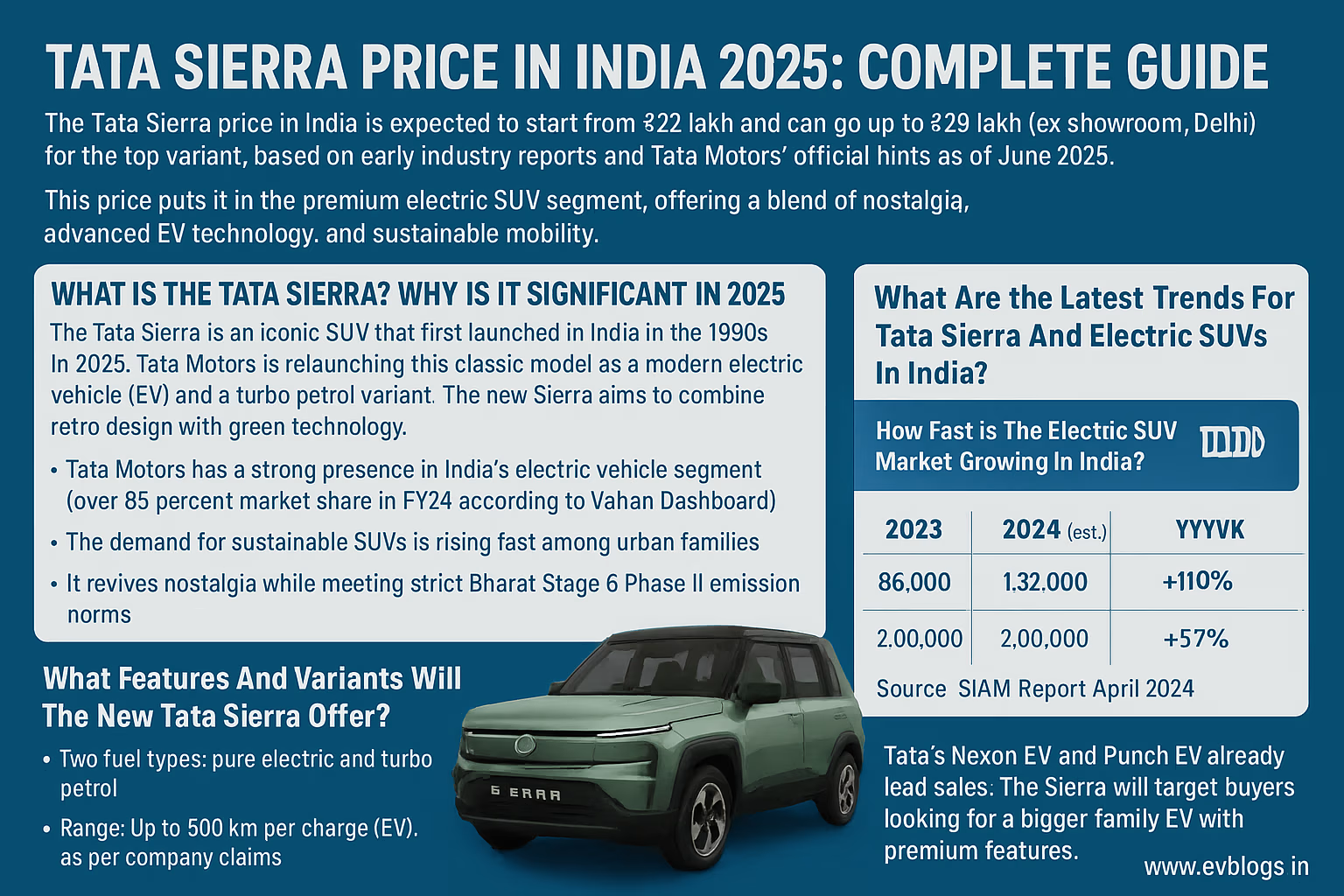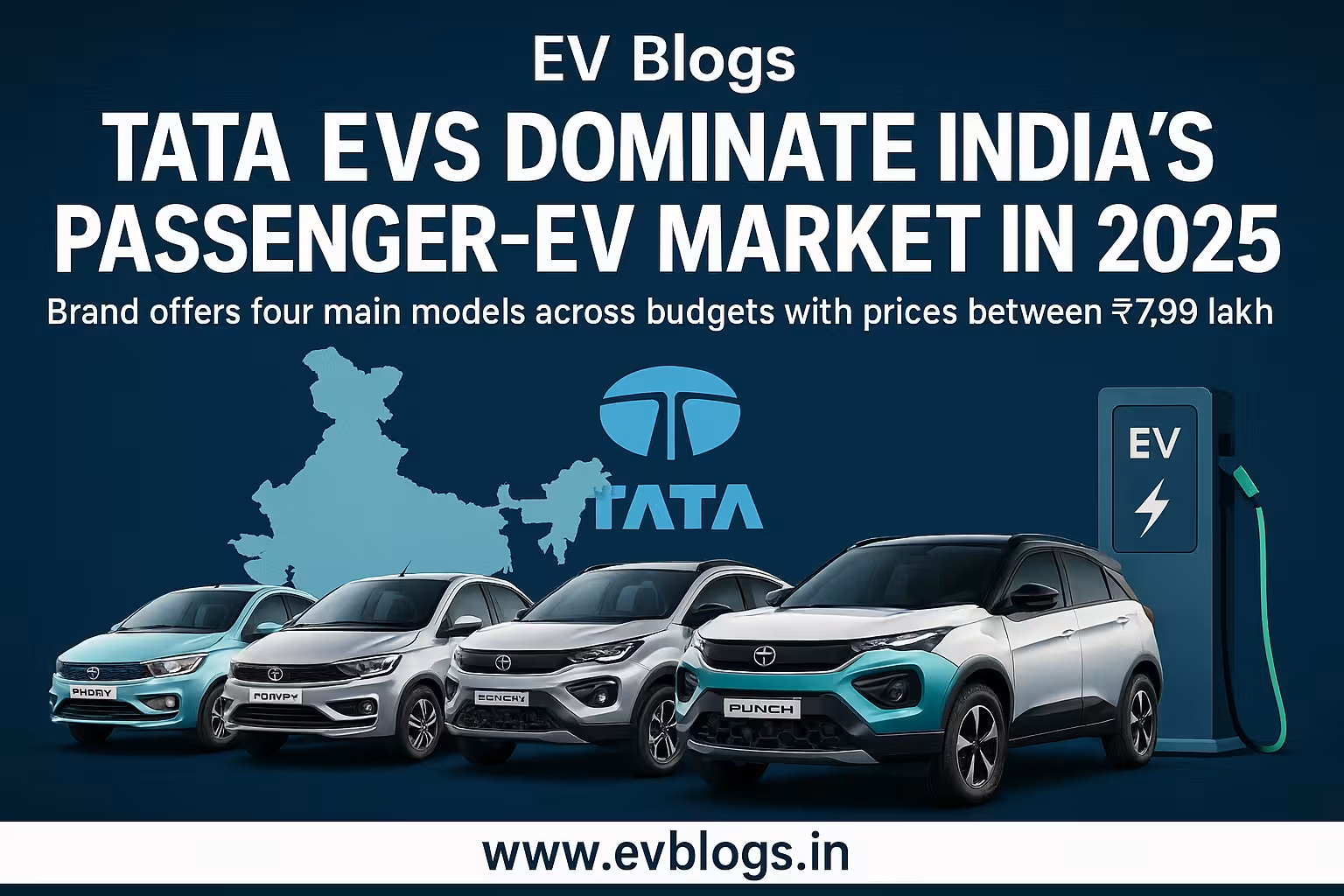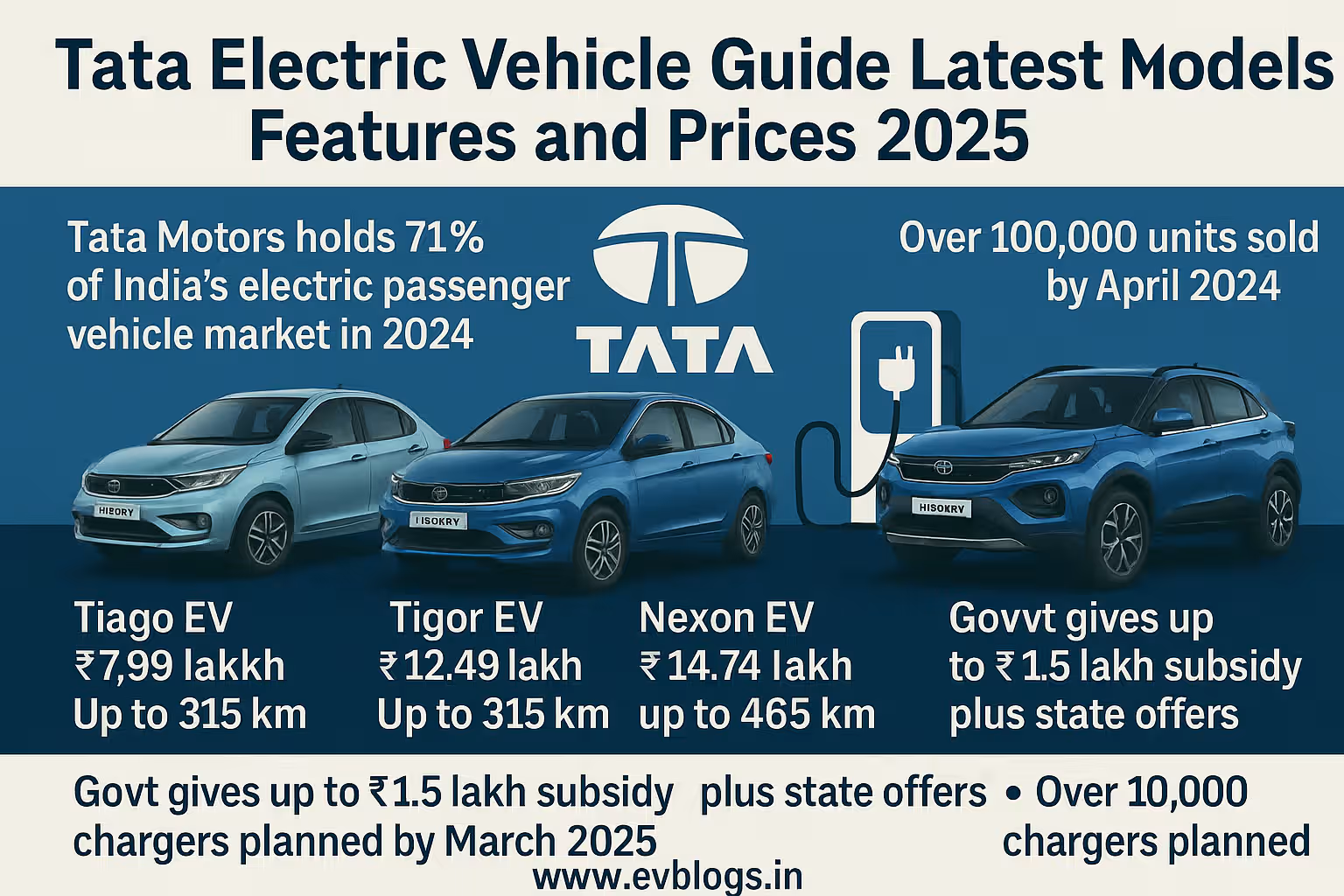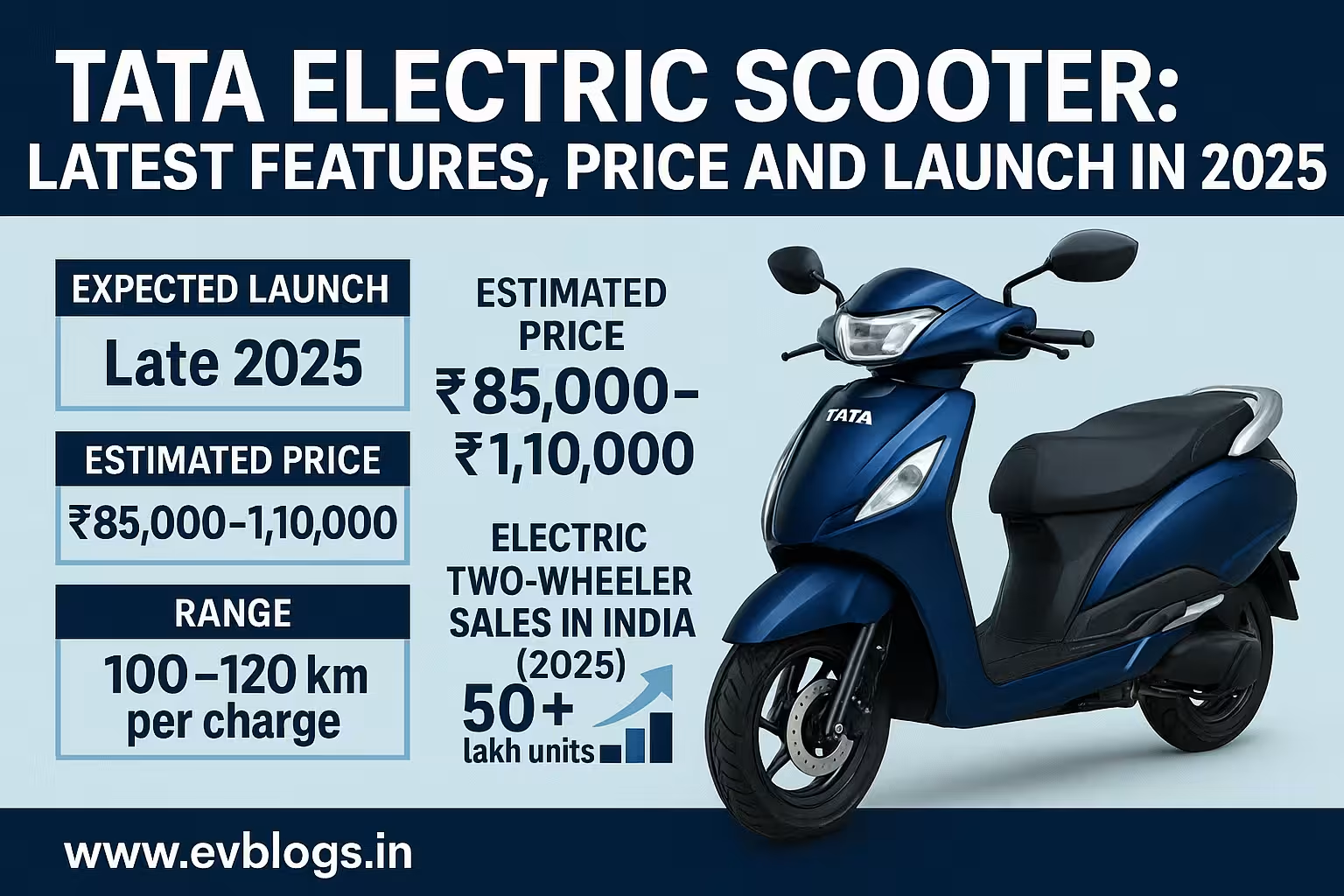Hedhvick Hirav
Hedhvick Hirav is a dedicated EV researcher and editor with over 4 years of experience in India’s growing electric vehicle ecosystem. Their contributions have been recognized in leading sustainability publications and automotive journals.
Summarize & analyze this article with
Choose an AI assistant and open this article directly:
Tip: if the AI doesn’t fetch the page automatically, paste the article URL manually.

Electric Vehicle Battery Innovations and Latest Technology (2025 Guide)
Introduction Pulse of the EV Revolution
Electric vehicles (EVs) are no longer a futuristic vision—they are rapidly becoming the backbone of modern transportation. With the world governments and various industries pledging to cut carbon emissions, the market is exploding with the demand of efficient, cheap and sustainable electric vehicles. This transformation revolves around a very important element which is the battery.
New EV battery invention is transforming what can be achieved, and more range, quick charge, cheaper prices, and eco-friendly production is becoming a reality. If you are even contemplating an electric car, no doubt investing in clean tech or just being interested to know how transport will be in 2025, this knowledge is essential.
In this article, we are going to deconstruct the newest EV battery technologies, how these changes are going to affect the world, what the experts think about it and what you can do to buy and use electric vehicles intelligently.
Contents Page
I. Introduction
II. Latent deflation and highest profit
II. Equilibrium adjustments after the period of control
II. Consumption and growth
II. Profit growth
II. Release growth
II. Conclusions
The Electric Vehicle Battery State in 2025
Latest Battery Technologies Powering Modern Electric Vehicles
Lithium-Ion The Workhorse This technology has proven itself as the big workhorse battery.
The Next Leap The Solid-State Batteries
LFP (Lithium Iron Phosphate): Safety & Affordability
New Chemistries: Sodium-Ion and Beyond
The role of Battery Innovations in EV Market.
Advantages of modern EV Batteries
Battery Recycling and Sustainability of Efforts
How to Change the World: Opinions of Experts: What to Expect Next?
Down-to-earth Recommendations to Owners & Buyers of EVs
FAQ: Are These the Real Questions About EVs Batteries?
Conclusion: Energy to Power a cleaner future
Sources
A future state of Electric Vehicle Battery
Battery technology was the driving force of the electric vehicle movement all along. By 2025 a couple of factors will fuel the pace of battery innovation:
- Consumer Demand: Motorists desire further distances and quick charging.
- Cost Reduction: The batteries are affordable thus making EVs affordable.
- Sustainability: The current scrutiny on the practice of sourcing and disposing batteries is on the rise.
- Government Policies: government incentives and regulations are the driving force to manufacturers to use cleaner energy.
Global sales of electric vehicles are expected to surpass 20 million units by end of 2025 (IEA), with India’s own market set for double-digit growth as battery prices drop below $100/kWh—a key affordability threshold.
Important Charging Chemistry used in Contemporary EVs
Lithium-Ion The Workhorse This technology has proven itself as the big workhorse battery.
Lithium-ion (Li-ion) batteries remain the most widely used in 2025 due to their balance between energy density, cost, and reliability.
Features:
- Energy Density: It charges most of the present-day EVs, which can cover up to 600 km.
- Cycle Life: It is usually 8?10 years or more than 1500 cycles.
- Thermal Management: Improved BMS (Battery Management Systems) reduce overheating risks.
Recent Improvements:
- Installation of silicon anodes can add 20 per cent.
- Increased life span granting additives of electrolytes.
The Next Leap The Solid-State Batteries
Solid-state batteries substitute liquid electrolyte with solid ones, solving most safety and performance issues related to Li-ion cells.
Benefits:
| Characteristic | Non Solid-State | Non Lithium-Ion |
|---|---|---|
| Energy Density | 2x more as high | Standard |
| Speed of Charging | Rapid A lot Faster | Medium |
| Safety | Ample enhanced safety | Threat of thermal runaway |
| Life expectancy | Long | Short |
In 2025 the situation will be as follows:
Although mass production is still difficult given cost and scale-up obstacles, manufactures such as Toyota and QuantumScape have declared commercially available vehicles using solid-state battery power in specific markets in 2022.
LFP (Lithium Iron Phosphate): Safety & Affordability
The LFP battery packs have acquired much traction on entry level EVs because of:
- Unparalleled Thermal Stability: Lower possibility of fire or explosion.
- Long Cycle Life: more than 3,000 cycles.
- Reduced Cost: No cost of cobalt and Nickel.
With only a minor sacrifice in range compared to the advanced Li-ion, they are popular in markets with a heavy weight on safety and cost-effectiveness, like the two-wheeler market and urban last-mile delivery fleet in India.
New Chemistries: Sodium-Ion and Beyond
Sodium-ion batteries have been discussed as an alternative to lithium as the prices of the latter rise and supply chains become threatened:
Sodium-Ion Advantages:
- It utilizes an abundant sodium resource as opposed to a lithium source which is difficult to come by.
- Less expensive; friendly to the environment.
By the early 2025, manufacturers such as CATL have started the modest deployment of them in affordable city vehicles and grid-tied stationary storage.
Additional new chemistries in the R & D are:
- Lithium-sulfur (high theoretical capacity).
- Zinc-air (potentially very low cost).
- Dual-ion systems (improved sustainability).
The EV market and Battery Innovations Creating it
This is how the advances are making a difference:
Increased Range
Current batteries make mainstream electric cars able to cover more than 400 km in a single charge-ensuring that the consumers in India can navigate the country regardless of their terrain.Faster Charging
The fastest charging 350 kW fast chargers are now able to fully charge compatible models with advanced chemistries in under 15 minutes in what is known as a 10-80 top-up.Reduced cost of Ownership
As can be seen in this graph, battery packs are already under 100/kWH in most places by mid-2025:
| Year | Average Pack Price ($/kWh) |
|---|---|
| 2019 | $156 |
| 2023 | $132 |
| 2025 | <$100 |
(BloombergNEF projection)
The EV sticker prices are tending towards parity with petrol/diesel competitor cars- particularly, when the economy time savings of these fuels is considered.
- Push in Local Manufacturing
The PLI scheme used by India promotes the production of batteries (including LFP, sodium-ion cells) inside the country and decreases the reliance on imports, increasing employment.
Advantages of modern EV Batteries
- Better Reliability: Better cell chemistry translates to less breakdowns or replacement.
- Better Warranties: A lot of the car producers currently provide Warranties on battery packs up to eight years or more.
- Increased Safety Levels: The advanced BMS diagnoses faults at an early stage; solid-state gets rid of fire hazards by preventing inflammable liquids.
- Greener Chains of Supply: Increase in the number of automakers who source materials mined responsibly; others use content that is recycled.
- Reusability: End of life batteries are used more and more as second life applications in stationary storage then recycled.
Battery Recycling and Sustainability of Efforts
By mid-decade, when millions more batteries come to the end of their useful life every year, the recycling of these batteries is highly important:
Key Processes:
- Collection & Sorting
- Disassembly
- Material Recovery
- Lithium/cobalt/nickel metallurgy is ideal in hydrometallurgy
- Second life/Reuse
The solar microgrids or telecom towers use recycled EV packs with power
Leading Initiatives:
India mandates Extended Producer Responsibility (EPR), requiring manufacturers/importers to ensure proper collection/recycling rates—a policy mirrored globally.
Companies like Attero Recycling (India), Redwood Materials (US), Umicore (Europe) are scaling closed-loop systems that return recovered metals into new battery production lines—reducing mining demand drastically over time.
How to Change the World: Opinions of Experts: What to Expect Next?
Where they think battery technology is going next we asked the industry experts:
We are going to come to mass adoption of solid-state batteries in this decade, not just in the luxury cars but also in the mass-market cars, says Dr Ankit Patel, Head of R&D at a top Indian OEM.
Where price matters most the role of Sodium-ion will be huge, e.g., rural mobility solutions.
The BloombergNEF research analysts explained: “In early 2030s, practically all the new passenger cars on the market will be electrified due to the declining costs and intense technology upgrading every three or four years.”
Another area that is being pointed out by manufacturers is software development that can enhance charging behavior using AI-assisted BMS maximizing longevity and minimizing operator involvement.
Down-to-earth Recommendations to Owners & Buyers of EVs
Considering to go electric? This is some of what you should know about batteries:
On why to choose an Electric Vehicle
The base to compare Models is on:
- Unable to make it a round trip without recharging on your daily commute requirements
- Charging speed compatibility with home /public chargers
- Battery pack warranty has a period
- Chemistry type (LFP may suit city users; NMC/NCA for longer drives)
Optimizing the life of Your Battery
Then do the following best practices:
- Don’t keep charging above 90 percent and discharge below 10 percent frequently unless you need it.
- Only use chargers that are issued by the manufacturers; fast-charge only when necessary.
- Be careful about the extreme heat waves prevalent in India and keep your car parked in shaded/covered places.
- Routine servicing should be scheduled to change the BMS firmware should it be available.
- Practice- Make long trips (every now and then) in case you are doing most of the short trips- will assist in balancing the cells.
An example Cost Comparison Table
| Aspect | Petrol Car | Electric car |
|---|---|---|
| Fuel Cost/km | 6 to 8/km | 1 to 2 /km |
| High | Low The question of annual service recurs in other contexts where it has been found to cause more harm than good to the children. | |
| Battery Warranty | N/A | Normal by 8 years/160 kkm |
| Tailpipe emission | High | Zero tailpipe |
Battery replacement is required on what occasion or occasion?
Most modern packs last well beyond eight years with normal use—but replacement costs have dropped significantly (~₹3–4 lakh for typical sedan). Most manufacturers have buybacks or second-life programs.
FAQ: Are These the Real Questions About EVs Batteries?
Question 1, What is an average battery life of an EV?
A modern lithium-ion pack typically lasts eight to ten years or about 1,50,000–2,00,000 km before significant degradation (<80% original capacity).
No 2: can I leave the car electrically connected all night?
Yep - in most modern systems the batteries will stop charging when fully charged; but under extreme temperature conditions, follow the manufacturer recommendations on extended plug in times.
Q3: Can I upgrade my current car’s battery to a newer technology later?
Typically not suggested as a result of integration issues, retrofits might be provided by the OEMs themselves in their own model ranges, as the technology matures.
Q4: What will occur when an old battery is pulled out?
It usually ends up in recycling chains where valuable metals are salvaged- or it can be stationarily resold then recycled.
Q5: Do I have sufficient public chargers available to fast-charging technology?
In big cities yes, and at a greater pace along highway networks via the government schemes such as FAME-II; establish compatibility requirements before undertaking long tours.
Conclusion: Energy to Power a cleaner future
Electric vehicle battery innovation is faster than ever before, and this is bringing about a positive ripple effect on affordability, convenience, sustainability, and energy independence around the globe.
There is a huge appeal to Indian consumers in particular.
- It is reasonable to switch today due to the declining costs;
- The new chemistries are heralded to be safer, ride-to-demand;
- Changing policies create a hand-in-hand relationship between environmental benefits and responsible resource utilization;
- You are thinking about your initial electric acquisition or merely consider yourself a trendsetter moving in line with the rest of the world, being aware of what is going on on the battery side will enable you to make more intelligent decisions regarding your purse and the environment.
Sources
- International Energy Agency – Global Electric Vehicle Outlook
- BloombergNEF – Battery Price Survey
- Ministry of Heavy Industries – FAME-II Scheme
- Automotive Research Association of India – Technical Reports
- CATL Official Announcements – Sodium-Ion Launches
- Attero Recycling – Indian Battery Recycling Updates


